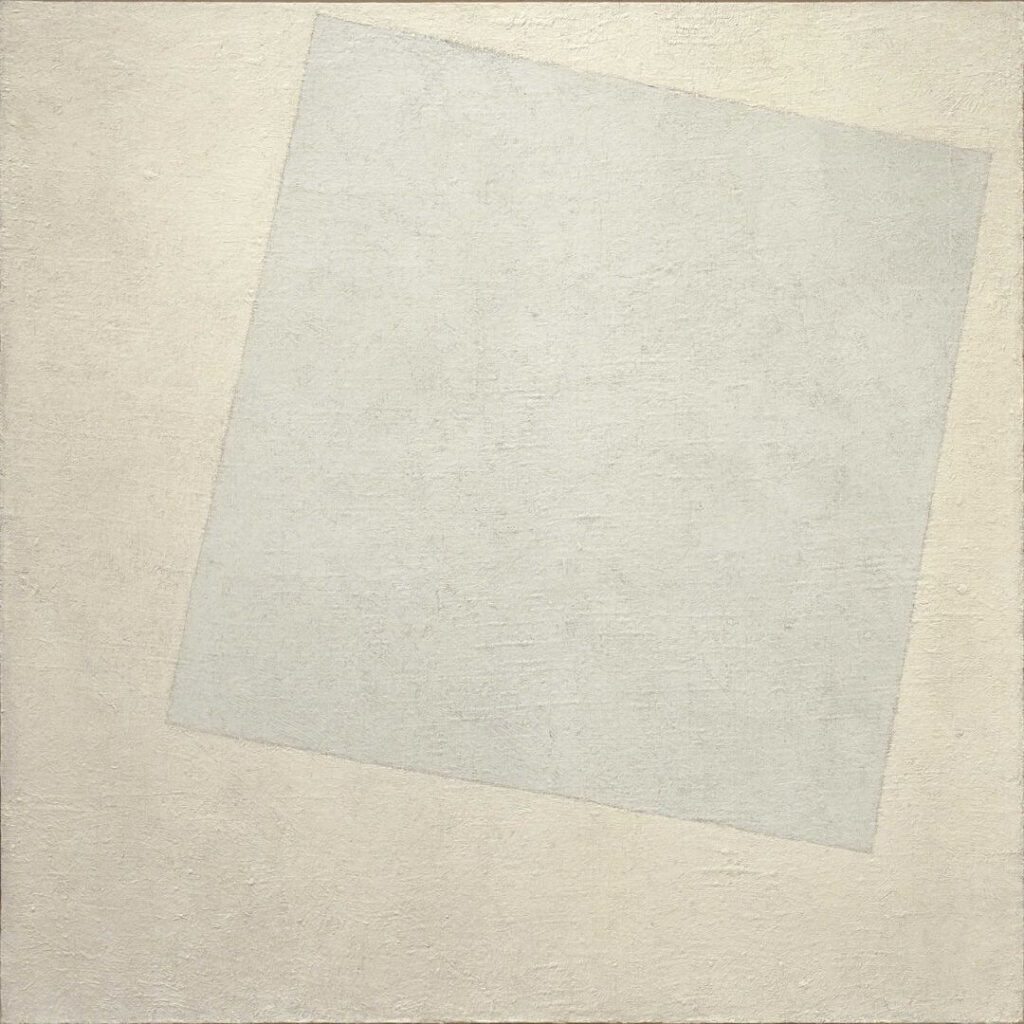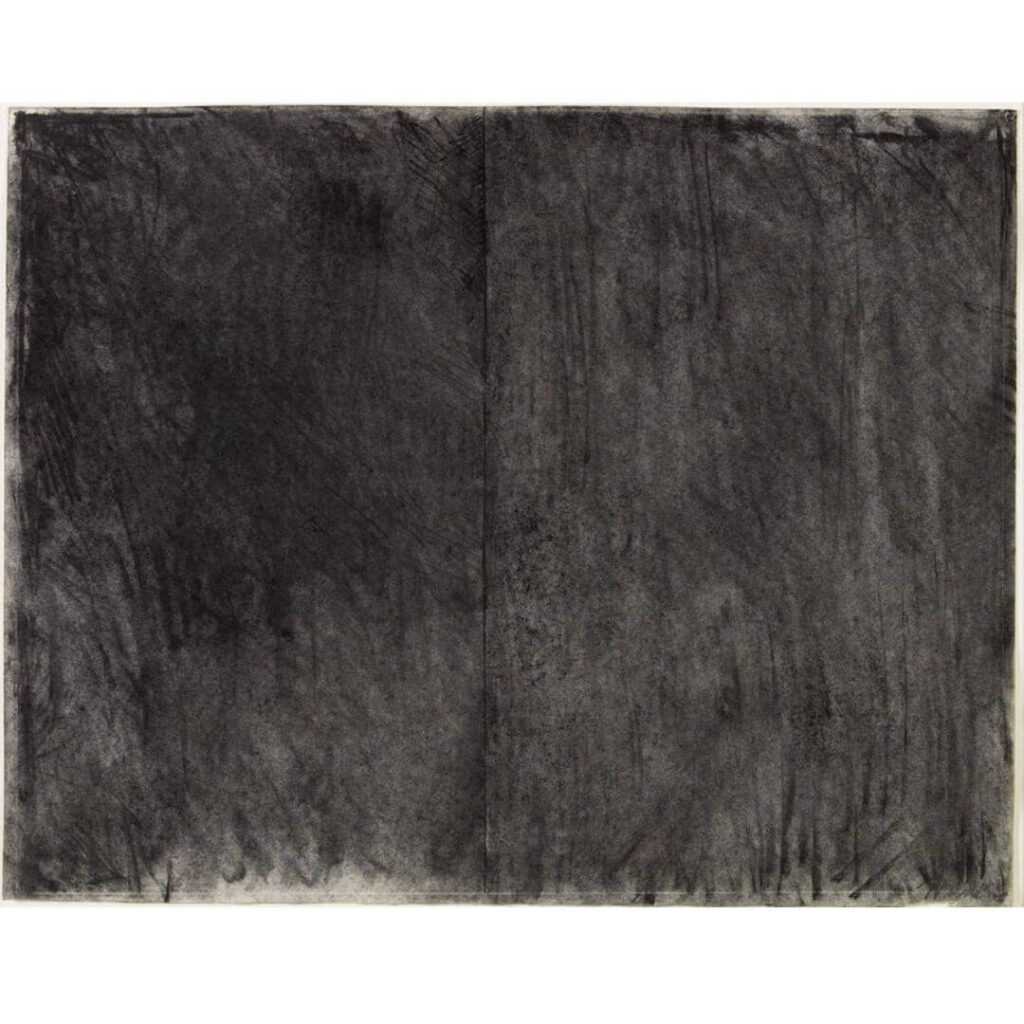The minimalist movement is an art movement that has been around for a long time. It is an art form that I admire and appreciate.
Minimalist art emerged in the early to mid-20th century as a reaction against the preceding decades’ highly emotional and expressive styles. Characterized by a pared-down aesthetic emphasizing simplicity, geometry, and repetition, minimalist art has profoundly impacted the art world and beyond.
Read on to learn more about minimalist art and some of the top works of art by minimalist painters.
Table of Contents
- The Significance Of Minimalist Art
- Top 10 Minimalist Works Of Art You Should Know
- “Black Square” By Kazimir Malevich (1915)
- “Number 1” By Jackson Pollock (1949)
- “Untitled (1961)” By Ad Reinhardt (1961)
- “White on White” By Kasimir Malevich (1918)
- “Untitled” By Mark Rothko (1960)
- “Blue, and Yellow and Red” By Ellsworth Kelly (1964)
- “The Tree” By Agnes Martin (1964)
- “Untitled” By Brice Marden (1964)
- “Untitled” By Donald Judd (1969)
- “Untitled” By Dan Flavin (1969)
- Related Questions
The Significance Of Minimalist Art
Minimalist art’s influence can be seen in various fields, from architecture and fashion to music and design. It is an art movement that still attracts many people today.
Read on as we will explore the significance of minimalist art and its enduring appeal. We will focus on ten essential minimalist paintings you should know.
As we examine these works’ techniques, themes, and contexts, we will gain a deeper understanding of the principles underpinning minimalist art and their relevance to our lives.
Minimalism is an art movement first seen in 1916 but took off in the 1960s. Minimalist art is characterized by a focus on simplicity and the use of minimal elements to create a powerful artistic statement. Minimalist art may appear straightforward, but it can be deceptively complex.
Top 10 Minimalist Works Of Art You Should Know
We have picked out the top ten significant works of art that we believe everyone should know.
Read on as we explore the significance of minimalist art and look at the top 10 artworks you should know.
“Black Square” By Kazimir Malevich (1915)

“Black Square” is perhaps the most iconic work of minimalist art. It is a simple black square on a white background, and it is said to represent the ultimate essence of the painting. Malevich believed art should be abstract and free from any connection to the real world.
“Number 1” By Jackson Pollock (1949)

“Number 1” is a large canvas covered in drips and splatters of paint. This painting is an excellent example of abstract expressionism, a precursor to minimalism. Pollock’s use of drips and splatters creates a sense of chaos and movement, but the overall effect is one of unity and simplicity.
“Untitled (1961)” By Ad Reinhardt (1961)

“Untitled (1961)” is a black canvas with subtle variations in texture and tone. Reinhardt’s work is often associated with minimalism because of his focus on pure abstraction and the use of limited elements.
“White on White” By Kasimir Malevich (1918)

“White on White” is another famous work by Malevich. It consists of two white squares on a white background, and it is a perfect example of the minimalist use of simple geometric shapes to create a powerful statement.
“Untitled” By Mark Rothko (1960)

“Untitled (1960)” is a large canvas covered in two rectangles of color. Rothko is known for using color to create a sense of depth and emotion, and this painting is an excellent example of how he used simple elements to create a powerful effect.
“Blue, and Yellow and Red” By Ellsworth Kelly (1964)

“Blue, and Yellow and Red” is a canvas divided into three equal parts, each painted differently. Kelly’s work is often associated with minimalism because he uses simple geometric shapes and solid blocks of color.
“The Tree” By Agnes Martin (1964)

“The Tree” is an oil on canvas and graphite painting in 1964, which now resides at the Museum of Modern Art in New York. Martin’s work is often associated with minimalism because of her focus on simplicity, repetition, and limited elements.
“Untitled” By Brice Marden (1964)

“Untitled” is a canvas covered in gray paint. Marden’s work is often associated with minimalism because of his focus on monochromatic paintings and the use of simple, repetitive forms.
“Untitled” By Donald Judd (1969)

“Untitled (1969)” is a stack of rectangular boxes made from galvanized iron. Judd’s work is often associated with minimalism because of his use of industrial materials and his focus on the relationship between the artwork and the surrounding space.
“Untitled” By Dan Flavin (1969)

“Untitled (1965)” is a fluorescent light installation with four tubes arranged in a square. Flavin’s work is often associated with minimalism because of his use of industrial materials and his focus on the relationship between the artwork and the surrounding space.
These ten paintings are essential in minimalist art because they demonstrate the power of simplicity and yet have a complex art form minimalist art is. At first glance, many may feel they are pretty simple works of art, but when you look at them closer and delve into their meanings, you can see they are complex and intricate.
That is why many of these artworks continue to sell for a record number of dollars on worldwide auctions.
Anita Louise Art is dedicated to art education, great artists, and inspiring others to find and create their art. We love art that uplifts and inspires. #ArtToMakeYouSmile! #ArtToMakeYouHappy!
If you want to see any of my art, you can find out more by clicking here. If you are interested in what inspires me and my paintings, you can discover more by clicking here.
We have a free newsletter and would love you to be part of our community; you can subscribe to the newsletter by clicking here. If you have any questions, I would be happy to talk to you anytime. You can reach me, Anita, by clicking here.
Subscribe to our Anita Louise Art YouTube Channel with great videos and information by clicking here.
Join us for our podcast “5 Minutes With Art.” Spend 5 minutes a week with us to discover and learn about great art and artists. You can find out more about our podcast by clicking here.
Related Questions
How Did Mannerism Become An Offshoot Of The Works Of The Renaissance?
Mannerism is the art movement that emerged after the High Renaissance era. Mannerism art is an offshoot of the Renaissance; Renaissance artists such as Michelangelo and Raphael adopted mannerism techniques. Mannerism art exaggerated and distorted elements of Renaissance art while creating a sense of imbalance in their art.
By clicking here, you can learn more by reading How Did Mannerism Become An Offshoot Of The Works Of The Renaissance?
What Did Leonardo da Vinci Contribute To The Renaissance?
Leonardo da Vinci made many contributions to the Renaissance in art, science, engineering, medicine, and architecture. He was a keen observer who wrote down much of what he discovered in his notebooks. His artistic techniques changed how artists painted and influenced many other Renaissance artists.
By clicking here, you can learn more by reading What Did Leonardo da Vinci Contribute To The Renaissance?
Meaning Of “Art Speaks Where Words Are Unable To Explain”
“Art speaks where words are unable to explain” means that even though compelling, and cannot always convey the message. Words are powerful images, or art pieces can be much more potent than the spoken or written word.
By clicking here, you can learn more by reading the Meaning Of “Art Speaks Where Words Are Unable To Explain”

